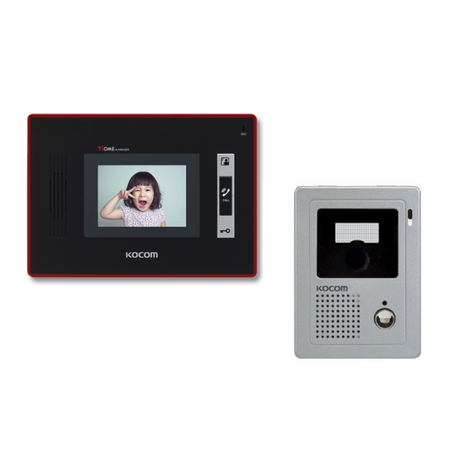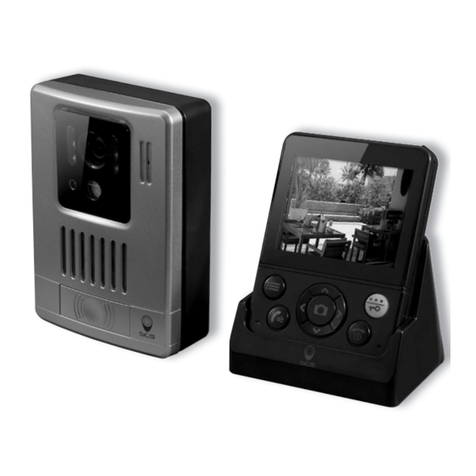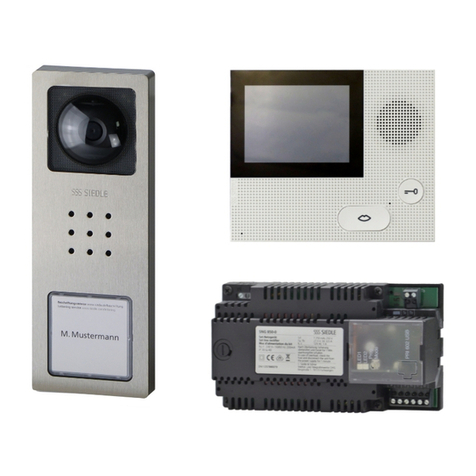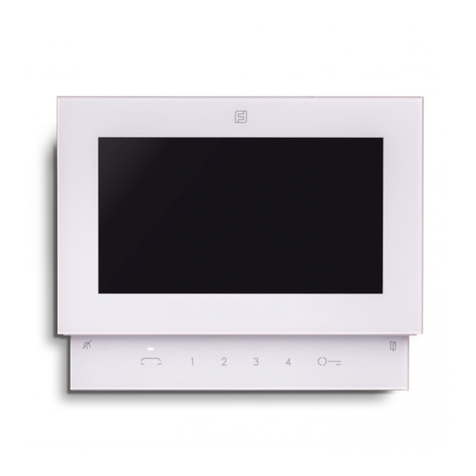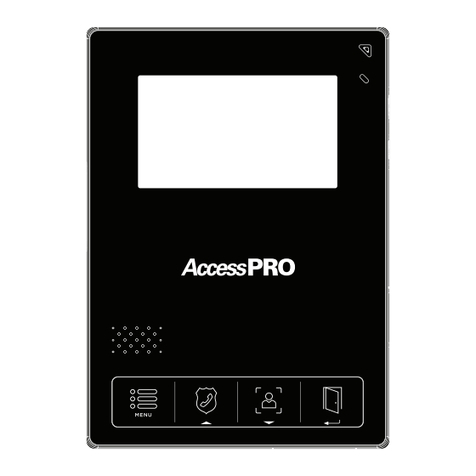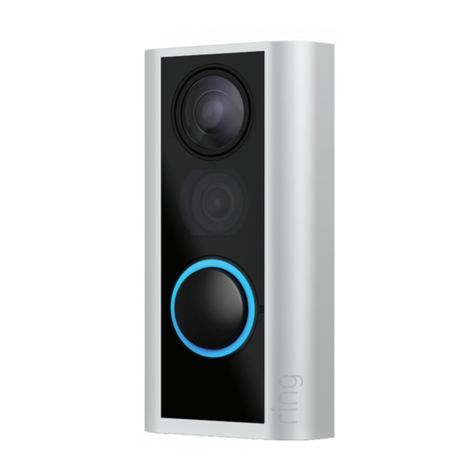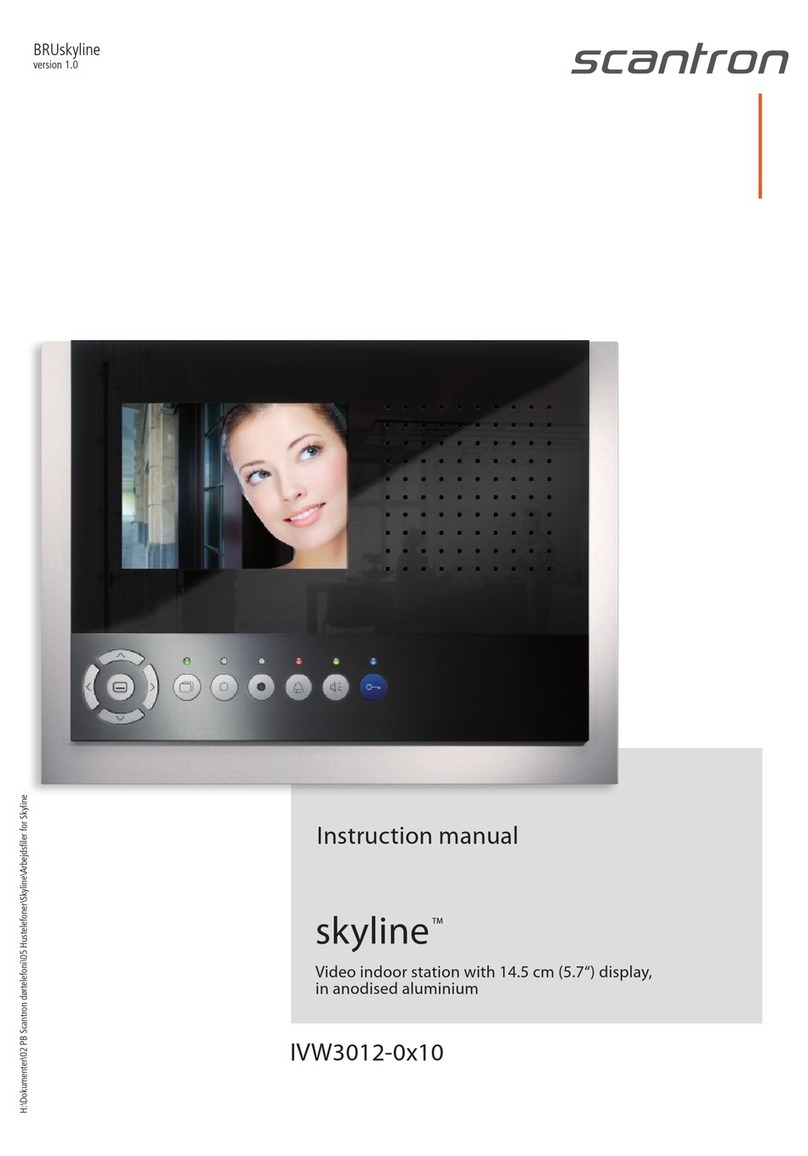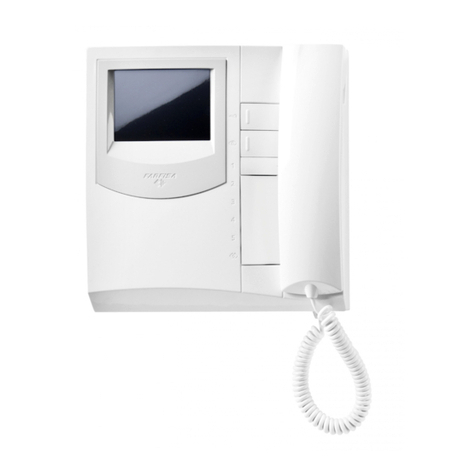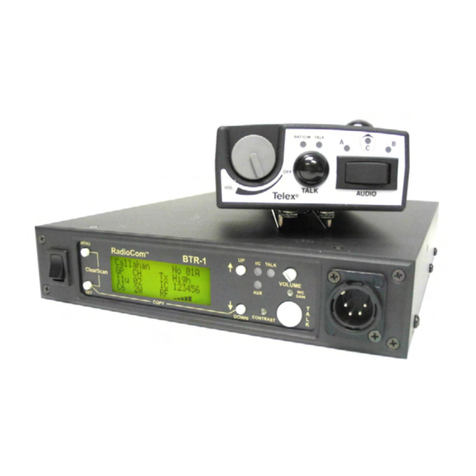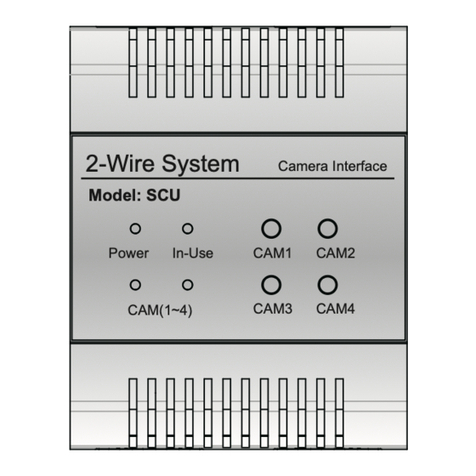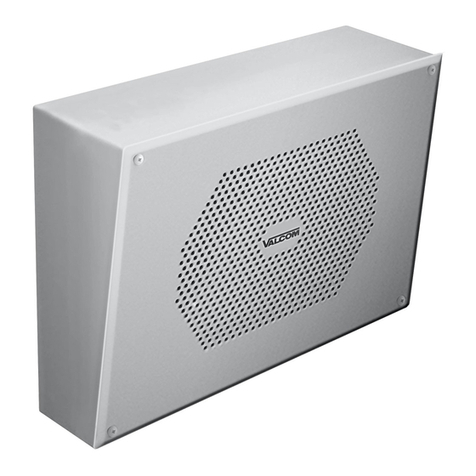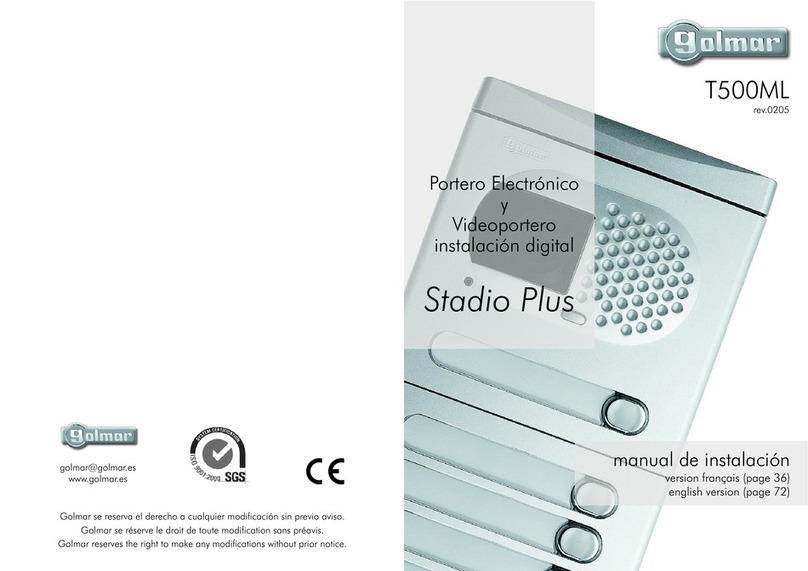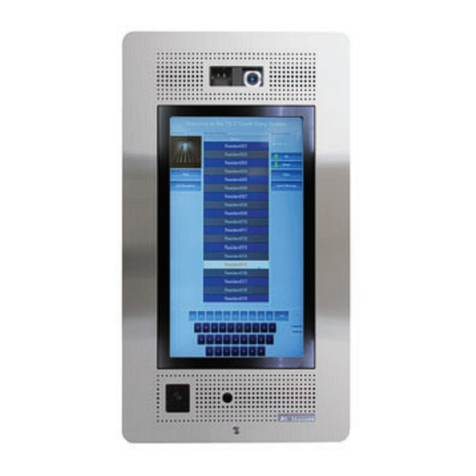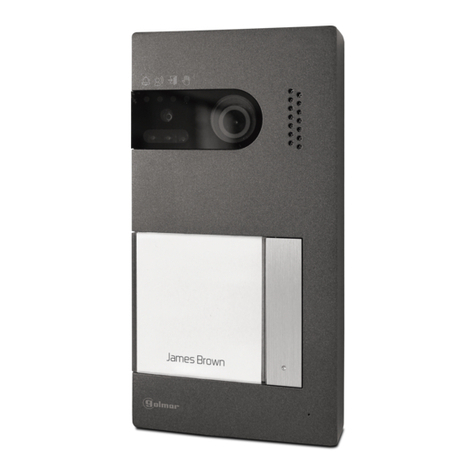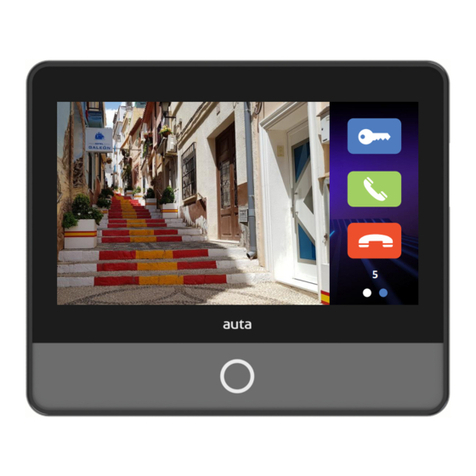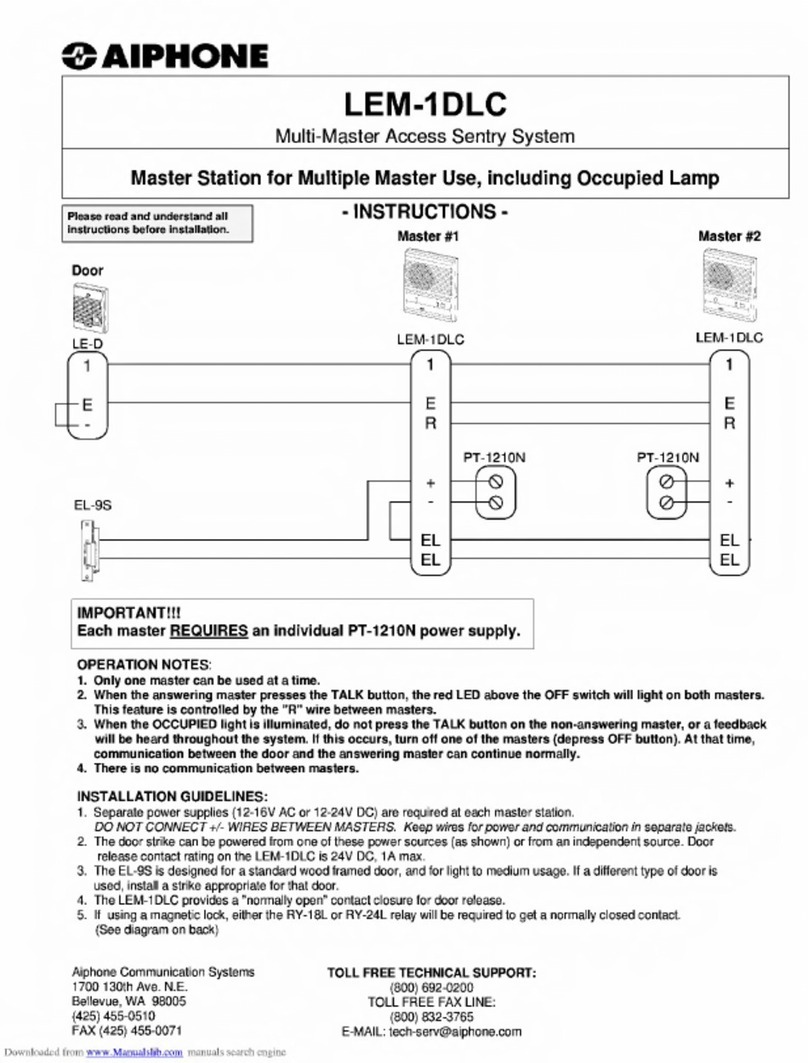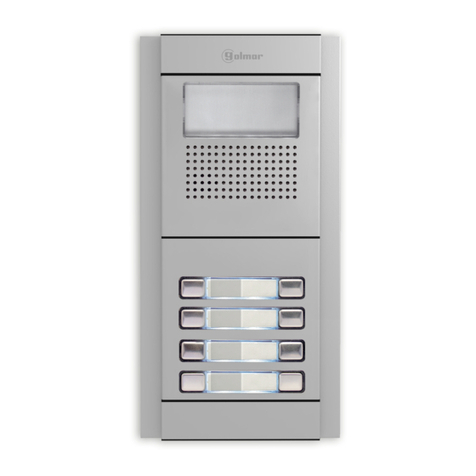FlightTech Intercoms ITC-404SP User manual

1
FlightTech
Intercom
ITC-404SP Four Place
Stereo Panel Mount
Intercom with Enhanced
Noise Reduction
Technology
FlightTech
Intercoms

Introduction
Congratulations on purchasing the new FlightTech ITC-404SP panel mount intercom. The ITC-404SP is de-
signed using the latest in noise canceling and printed circuit board technology. With proper installation, the
ITC-404SP will give many years of reliable cockpit communications for both the pilot and passengers.
FlightTech ITC-404SP Features
Enhanced Noise Reduction
The ITC-404SP features Enhanced Noise Reduction or ENRI. The ENRI feature will eliminate or
greatly reduce all background noise picked up the headsets microphone. Sounds such as engine noise and
wind noise that are commonly heard with voice operated intercoms when the microphone circuits are open,
are eliminated with ENRI.
Pilot Isolate
At times, it is desirable for the pilot to listen to ATC and allow the passages to commutate while not
interfering with the pilot. The Pilot Isolate switch in the “ALL” position allows the pilot to hear and talk to
every one connected to the intercom. In the “PILOT” position, the pilot will only hear the communication
radio audio.
Pilot & Co-Pilot PTT
The ITC-404SP includes PTT functions for both the Pilot and Co-Pilot and depending on which PTT
switch is enabled, either the Pilot or Co-Pilot will key the communications radio and be able to speak.
Auxiliary Audio Stereo Input
A Stereo Auxiliary input is provided allowing a tape or CD player to be connected to the ITC-404SP.
The audio output is Stereo and requires Stereo headphones for proper operation.
Auxiliary Audio Muting
The Auxiliary audio will mute when audio form the Communication radio or Intercom audio occurs.
Cellular Phone Interface
The Cell Phone interface will connect the pilots headphones to a Cellular Phone. Unlike headphone
with built in cell jacks, the audio to the phone from the pilot headset is derived from the intercom audio
processor, eliminating engine noise or other background noise that may be heard during the phone call. Con-
nection between the ITC-404SP and the cellphone is done through a patch cord with 2.5mm plugs.
Fail Safe
In the event that power should fail to the intercom, the pilots headset is automatically connected di-
rectly to the radio microphone and headphone inputs.
Unpacking
The ITC-404SP intercom comes complete ready for installation and includes the follow.
• Intercom Unit
• Four 1/4” Stereo Headphone Jacks and mounting hardware
• Four Microphone Jack and mounting hardware
• Connector Housing and Terminals
• Installation Manual
• Drill Template for mounting the intercom
• Face Plate, Vertical and Horizontal
Carefully review the constantans to ensure that all of the items are included. If you find missing parts, contact
the factory.
2

Installation
Mounting the Control Panel requires four holes in the instrument panel and can easily be secured in place
by the Volume Control mounting nut and a 4-40 screw. Refer to the DRILL DRAWING (Fig. 1) for correct
holes sizes and locations. In addition to the Fig. 1, a separate drilling template is enclosed.
Control Panel Label, After the holes are drilled and the control panel is checked for proper mounting, the
Control Panel Label can be applied. Make sure the surface is clean form oil or drill chips. Remove the back
protective cover from the label and apply it to the instrument carefully aliening the holes. Insert the control
panel and install the Volume control nut.
Cable Connections, The main cable is connected to the intercom through two ten pin connectors that pro-
vide the Power, Audio Inputs and Headphone connections for the Pilot, Co-pilot and Passengers. Refer to
Page 8 for the connector connections.
The cable connector is a Molex KK-100 Series housing and crimp terminals. The terminals can be crimped
onto wire size ranging from 22 to 26 gage. 24 gage wire are recommended for the intercom installation.
Recommended tools for installing the terminals are, Molex Crimp Tool part # 11-01-0185 Hand Crimping
Tool.. Refer to the photo, on page 6 of the two 10 pin connectors for the locations of pin 1 through 10. Note
that there are locking and polarity tabs on the plug housing and socket housing. Refer to page 8 for the pin
connections.
Located along the side of the circuit board is J-3, a three terminal connector for the Cellular phone cable.
Refer to page 8 for the terminal connections.
Power (12-28 VDC) and Ground wires should be 22 Gage wire with a 1 amp fuse or circuit braker in line
with the Plus Voltage line.
Microphone cables as well as headphone cables should be a shielded cable . All ground or shield connections
should be terminated at one point at the connector.
3
Pin 1 Cell Phone Connector
Pin 1 Locking Tab.
Connectors J-1 J-2

4
Mounting Microphone and Headphone Jacks
1. Locate the mounting areas making sure that the jacks will not interfere with any aircraft control compo-
nents. (The jack contacts will expand when a plug is inserted into the jack.)
2. Drill 3/8” diameter holes for the headphone jacks.
3. Drill 1/2” diameter holes for the microphone jacks and install with the
insulating washers supplied. (see Fig. 7 )
Stereo Headphones
The ITC-404SP is designed to work STEREO HEADPHONES. Using MONO headphones could cause
damage to the intercom. If mono headphones are to be used with the intercom, either install a SPST switch
to the RING lead on the Stereo headphone jack or leave the terminal unconnected.
Cellular Phone Jack
The 2.5mm jack terminal diagram is located on page 7 and the intercom connector, J3 is located on page 8.
Auxiliary Audio Stereo Input
The Auxiliary Audio input is available for connecting a portable CD Player or other audio device to the in-
tercom system.
Push-to-Talk Switch
The ITC-404SP will accept both Pilot and Co-Pilot PTT switch installation. SPST push button switch’s can
be used with one terminal connected to ground and the other terminal connected to socket S1-7 for the Pi-
lots PTT and S1-9 for the Co-Pilot’s PTT.
Operation of the ITC-404SP
The ITC-404SP is one of the simplest intercoms available to operate, plug in the headphones, turn on the
power and start talking. It’s that easy!
With the ITC-404SP Enhanced Noise Reduction circuit, there are no squelch controls or functions to con-
tend with. Since there are no squelch function either manual or automatic, it is not necessary to kick-start
the audio with the first spoken word. Also, the missed words due to long pauses are gone. Simply talk.
Volume and Power Control
Turning the Volume control clock wise will turn on power to the intercom and increase the intercom
volume. This controls the amplitude of the headsets microphone heard by the pilot and passengers. The vol-
ume control has no effect of the auxiliary audio or the communications radio audio level.
Pilot/All Switch
The Pilot/All switch controls the audio heard by the pilot and passengers. In the ALL position, the
Pilot, Passengers, Auxiliary audio and Communication Audio can be heard by everyone.
With the switch in the Pilot position, the pilot will hear audio from the communication radio but not the
passengers or the auxiliary audio. There will be no side-tone heard by the pilot.
Headphones and ENRI
As with any intercom installation, the amount of ambient noise heard through the Passive ear cups is
dependent on the quality of the headphones. The better the Passive headphones, the better the nose reduc-
tion.

What the passive headphones do not do, is reduce or eliminate is the noise picked up by the headsets micro-
phone and heard when the intercoms audio path is open. This where the ENRI function comes into action,
eliminating or reducing the background noise heard by the headsets microphone.
NOTE: for best results, it is necessary to speak close to the headsets microphone.
ANR Headsets ANR Headsets provide additional noise reduction at the headset’s ear cups but some back-
ground audio from the headsets microphone can still be heard. ANR headsets used in conjunction with the
ITC-404SP ENRI intercom will have an added benefit of no microphone noise. ANR headsets are not re-
quired for the Electronic Noise Reduction circuit to operate.
Push-to-Talk
The ITC-404SP features Pilot and Co-Pilot PTT function allowing either the pilot or co-pilot to key
and talk on the communication radio. When ever the pilots PTT is pushed, only the pilot will be able to talk
but when the co-pilot PTT is keyed, the audio path is switch from the pilots microphone to the co-pilots mi-
crophone. The pilot can still talk through the intercom but not to the radio.
Auxiliary Stereo Audio & Muting Function
When a device such as a CD player is connect to the intercom and stereo headphones are used, pilot
and passengers can enjoy music while on long trips.
The Auxiliary Audio will mute when one of two things take place.
1. When ever there is audio present from the communication radio.
2. During Intercom communications.
The muting action from either source will effect all the headsets and auxiliary audio will remain muted for
several seconds after the intercom audio or radios audio stops.
Intercom Internal Adjustment
• There are four potentiometers located on the intercom circuit board VR-1 Microphone Gain, VR-2,
Noise Reduction, VR-3, Cell Phone Mic Level and VR-4, Radio Audio Balance. All the pots are set at
the factory for normal operation but depending on the type of headphone and ambiament background
noise during flight, some minor adjustment may be required. To make any changes, remove the top
cover and refer to Fig 8 for the locations of VR-1, VR-2, VR-3 and VR-4.
5
P-3, Pins 1 2 3
VR-1
VR-2
VR-3
VR-4
*LisghtSpeed mic gain adjustment is located on the
back side of the microphone.

Refer to Fig. 8
Adjustment of Mic Gain, VR-1 and Noise Reduction Control, VR-2
In some aircraft it may be necessary to adjust both the Microphone gain control and the Noise Reduction
control.
Microphone output levels vary for different brands of headsets and for best results, mixing headsets is not
recommended. Headset microphones with high outputs can result in some background noise being heard
and it will be necessary to adjusted VR-1 to eliminate the amount of sound heard by the microphones.
Some headset manufactures* include a microphone gain control on the microphone. This gain adjustment
should be turned to the lowest setting for best results. Refer to the headset manual for the location of the
adjustment.
If background noise is still heard, VR-2 the Noise Reduction Control and be increased. When adjusting VR-2, at a point about
3/4 rotation, a sharp drop off of audio will be heard. This is the maximum noise location on the pot, back up slightly for proper
adjustment.
High Noise Environment
It has been found that in aircraft such as open cockpit airplanes, wind passing over the microphone and high engine power set-
tings such as take off and climb will produce a popping sound in the intercom. For wind noise, it is recommended that a wind
muff be used on the microphone. High engine power settings are a bit more difficult to deal with and may be reduced by adjust-
ing the microphone level control for the lower setting. During normal cruise power setting, there should be no outside noise com-
ing through the intercom.
Communication Radio Line Balance
When toggling the Pilot/ISO switch, a difference in the radio audio level may be heard. To correct this level difference, a level
balance pot, VR-4 can be adjusted to set the audio level. Locate VR-4 and while listening to the communication radio audio
through the PILOTS headphone position, toggle the PILOT/ISO switch. Adjust VR-4until a even audio level is heard in both the
PILOT and ISO position.
Cellular Phone Interface
The Cell Phone interface includes a microphone level adjustment to provide the proper audio level to the cellular phone micro-
phone audio level. The factory setting should be correct for most phones and can be verified by making a call and noting the
speech quality on the called phone. If the audio is too low or clipping is heard, adjust VR-3 for the proper audio level.
After the adjustments are set and before closing the case, check to ensure that no wires are pinched or broken. Reassemble the
two parts of the case and tighten the two screws in the bottom of the case.
Service
With your new FlightTech ITC-404SP intercom properly installed, you will enjoy many years of trouble free operation. In the
event of a problem and after checking the obvious, fuse, jacks or wiring, you should contact the FlightTech Intercom Technical
Support center for suggestions or returning the intercom for repair.
The FlightTech phone numbers are located on the back cover of this manual.
6

4-40 x 3/8 screw
Volume Control Nut
Instructions for FAA Form 337
The ITC-404SP can usually receive an airworthiness approval by submitting the FAA form 337,
Major Repair and Alteration
(Airframe, Power plant, Propeller or Appliance)
. For the ITC-404SP, the following text can be used as a guide.
1. Installed FlightTech ITC-404SP Panel Mount Intercom, as per the manufactures instructions provided by the manufac-
turer, DesignTech Systems.
2. Installed intercom unit (location in instrument panel) in plane sight of the pilot and connected to the avionics buss
through a 1 Amp fuse. Jacks were installed on each side (location). Push-To-Talk buttons installed (locations).
3. This unit has a fail-safe feature built-in, in the event of a power failure to the intercom, the pilots headset can be con-
nected directly to the radio headphone input and microphone.
4. All work was done in accordance with manufacturer’s instructions, FAR43, AC43.13-1B Chapter 11 (Electrical Systems), Sec-
tion 5 (electrical wire rating), Section 6 (aircraft electrical wire selection), Section 7 (table of acceptable wires), Section 8
(wiring installation requirements), Section 9 (environment protection and inspection), Section 11 (clamping), Section 12
(wire insulation and lacing string tie), Section 13 (splicing), Section 15 (grounding and bonding), Section 17 (connectors),
AC43.13-2A Chapter 2 (Radio Installations).
5 Weight and Balance/Equipment list was amended.
6 Instructions for continued airworthiness: Annual visual and operational inspection as per AC43.13-1B, Chapter 12, Section 1,
-1 (Avionics equipment maintenance), 12-9a (inspection of avionics systems).
7
2.5 mm Cellular Phone jack.
Pin 1, Mic to J3-1
Pin 2, Audio to J3-2
Pin 3, shield to J3-3
Microphone and Stereo Headphone Jack

8
Pilot Mic
CoPilot Mic
Pass. 1 Mic
Pass. 2 Mic
To Radi o or Audi o Panel Mi c Input
To Radi o or Audi o Panel PTT
To Radi o or Audi o Panel Input
A/C Plus Vol tag e, 12- 28VDC
1/2 amp fuse
Ground
To Aux. audi o output R. Channel
To Aux. audi o output L. Channel
To Aux. audio output Ground or Shi el d
Pilot Headphone
CoPi l ot Headphone
Pass. 1 Headphone
Pass. 2 Headphone
Pil ot Mi c
Pil ot PTT
CoPilot Mic
CoPilot PTT
Pass. 1 Mic
Pass. 2 Mic
Mi c Audi o Output
PTT Out
Low Level Audio Input
Aircr aft Pl us DC Voltage
Aux. Audi o Input, R. Channel
Aux. Audi o Input, L. Channel
Ground/Shi el d
Pilot Headphones, Ch- 1
CoPilot Ch. 1
Pilot Headphones, Ch- 2
CoPilot Ch2
Ground/Shi el
d
A/C GND
Pil ots PTT, N/O Push Button Swi tch
Co-Pil ots PTT, N/O Push Button Swi tch
COMM Radio
CD Player
or other Audio Device
Note: If both Ster eo and Mono headphones
are g oi ng to be used with the ITC- 2003 ster eo i ntercom,
instal l a 33 ohm 1/4 watt r esi stor to the TIP and RING of
each headphone jack.
HEADPHONE JACK
33 OHM Resi stor
Whi te
Whi te
Whi te
Whi te
Whi te
Whi te
Whi te
Wh/Bl
White/Bl ue
Whi te
White/Bl ue
White/Bl ue
Cable wire colors are for FlightTech supplied cables.
Passang er 1, Ch 1
Passang er 1, Ch 2
White/Bl ue
Microphone Jack from radio cable
Headphone Jack from radio cable
GND
GND
Gr ound Ret ur n
J1-7
J1-8
J1-9
J1-10
J1-5
J1-1
J2-1
J1-2
J2-2
J1-6
P2-6
P2-4
P2-6
P2-5
J2-3
P2-7
P2-8
P2-10
P2-9
J1-3,4
MIC LOW
Whi te
White / Blue
JACK-1, PIN # CONNECTION
J1-1 PASSENGER MIC
J1-2 PASSENGER MIC
J1-3 MIC LOW SIDE
J1-4 MIC LOW SIDE
J1-5 PTT OUT
J1-6 MIC AUDIO OUT
J1-7 PILOT PTT
J1-8 PILOT MIC
J1-9 COPILOT PTT
J1-10 COPILOT MIC
JACK-2, PIN # CONNECTION
J2-1 A/C PLUS VOLT
J2-2 GROUND
J2-3 LOW LEVEL AUDIO
J2-4 AUX STEREO IN
J2-5 AUX STEREO IN
J2-6 GROUND
J2-7 PASS HP AUDIO
J2-8 PASS HP AUDIO
J2-9 PILOT HP AUDIO
J2-10 PILOT HP AUDIO
JACK -3 CONNECTION
J3-1 CELL PHONE MIC, TIP
J3-2 CELL PHONE HP
AUDIO, RING
J3-3 GROUND/SHIELD

NOTES
9

10
FlightTech Intercoms
DesignTech Systems ,P.O. Box 338 Lombard, IL 6014
Phone: 630-971-9692 Fax: 866-896-4431
Internet: http://www.flighttech.com Email: flighttech@flighttech.com
3-YEAR UNCONDITIONAL WARRANTY
“FlightTech Intercoms” are warranted against defects for three
years from date of purchase from authorized distributors and
dealers. Within the three year period, the FlightTech Intercom
will be repaired or exchanged (at our option) without charge for
parts or labor. Simply return your intercom along with proof of
purchase, return postage of $6.00 (within USA) and it will be
repaired or replaced within two weeks. Warranty does not
cover transportation cost or product misuse, accidental dam-
age, owner tampering or reworking.
Except as provided herein, either FlightTech Intercoms or
DesignTech Systems makes no warranties, expressed or im-
plied, including warranties or merchantability and fitness for a
particular purpose.
NOTE: Some states do not permit limitations or exclusions of
implied warranties, therefore, the aforesaid limitations (s) may
not apply to the purchaser.
Updated, April 20, 2006
ITC-404SP Technical Data
• Power Requirements: 12 to 28 VDC @ 40ma
• Size: Main Unit, 3.25” L x 2.2”W x 1.2” H
• Weight: 4oz
• Microphone inputs: 4
• Headphone output: 4 Stereo, 150 ohms
• Auxiliary Audio input: 600 ohm
Table of contents
